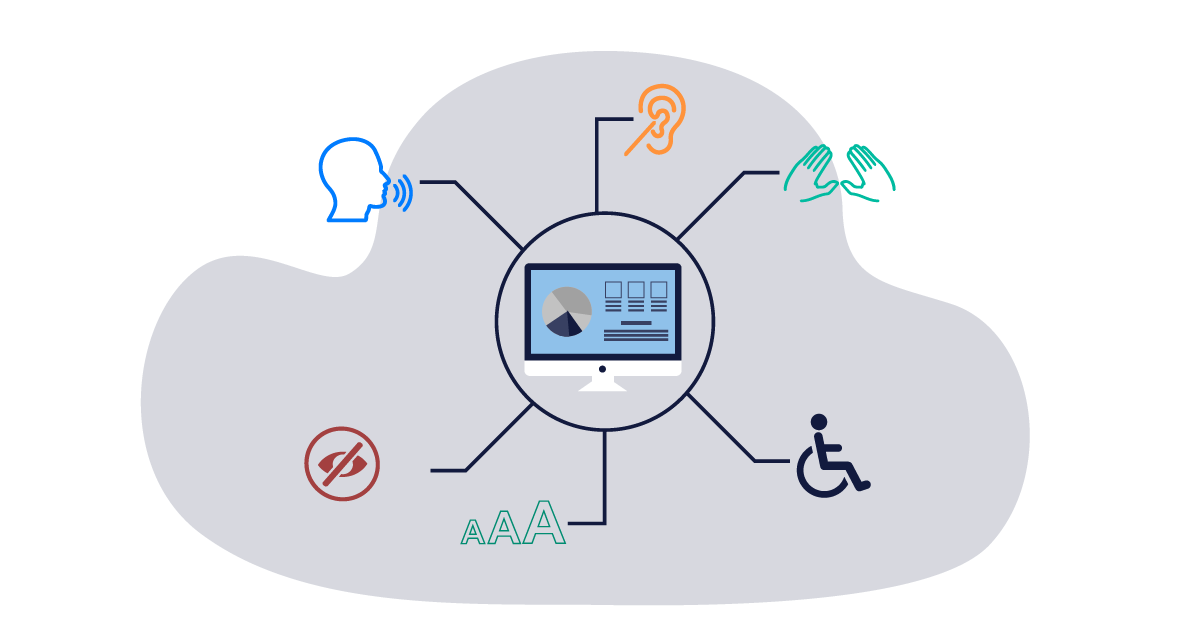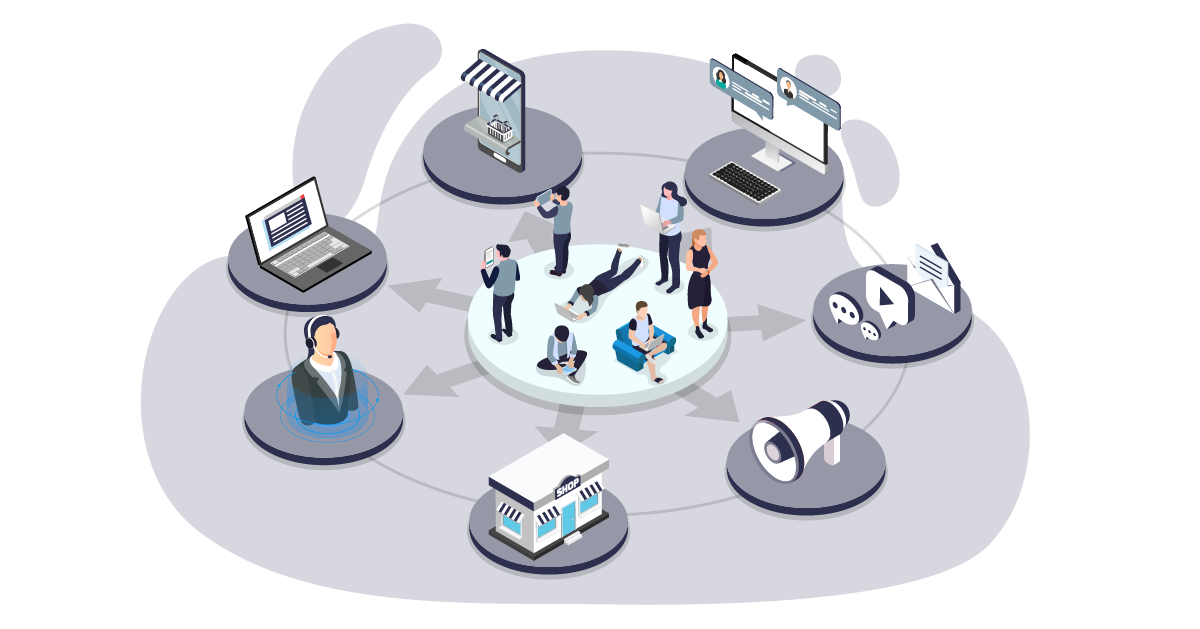- #1. User experience is key
- #2. Performance: Staying competitive
- #3. Accessibility: Reaching a wider audience
- #4. Cost-effective: Save on your server bills
- #5. Security: Staying trusted
- #6. Analytics: Stay up-to-date with your audience's needs
- #7. Privacy & identity management
- #8. Presence: Web, mobile, development, and wearables
- Final words

GSD
8 Reasons Why Web Development Is Important for Business Success
Posted by Zain Sajjad on September 28, 2023
Front-end apps are the first interaction point your customers will have with your business. It's your first—and at times only—impression on your users. It's a point where you either convert your hefty leads or lose all your marketing dollars. In the past few years, we've witnessed just how much digital environments have become an increasing part of everyday life. Web development is no longer just something that you “should" do, but has become a crucial component of business success.
Below we'll look at 8 of the key reasons why web development is still a critical component of business success and we'll also list a few development tools that can help push you in the right direction.
Table of contents
#1. User experience is key
We are living in an era of extreme competition, businesses spend huge amounts of money to lure customers towards their business. To retain them is up to the front-end that they’re interacting with. Building these experiences is hard and requires solving tons of complex problems. Big tech companies are investing a lot in front-end web development to ensure they are delivering the best experience to their users. That not only gives them a better ROI on customer acquisition costs but also cuts down on the huge retention costs for keeping users. Businesses spend big sums on design, but what if those designs are not brought to life properly?
88% of online consumers are less likely to return to a site after a bad experience
Thankfully, we have tools available to help design & development teams collaborate to bring the best aesthetics to users. Let’s take a look at some of those tools now:
Tools:
-
Adobe XD: Adobe XD’s range of plugins can help developers extract the code of UI components as they are designed by the design team.
-
Storybook: Storybook is an open-source tool for building UI components and pages in isolation. It streamlines UI development, testing, and documentation.
#2. Performance: Staying competitive
Optimized performance is one of the top business benefits of front-end development. After all, who likes slow page loads? No one. As the research shows - if an e-commerce site is making $100,000 per day, a 1-second page delay could potentially cost you $2.5 million in lost sales every year.
But is it really just about load time? What if the scrolling experience of your site is janky?! What if the checkout page takes too much time to load the payment gateway?
90% of users reported that they stopped using apps due to bad performance.
Performance today means keeping your whole app performant. And, keeping apps performant is not just a one-time sprint, it's a marathon—a long one. Teams have to stay vigilant in their selection of a tech stack. Negligence in performance optimization may result in costly revamps and huge losses. Here are the tools to keep your apps performant:
Tools
-
Static Site Generators (SSG): This is the most optimized way to serve web pages today. Frameworks like NextJS & Gatsby are making it easier for developers to develop apps based on SSG.
-
Lighthouse: This helps you check the performance of your website. Integrating it with your deployment pipelines can help you monitor performance on the go as you add more features to your app.
#3. Accessibility: Reaching a wider audience
At some point in time in our lives, or even on a daily basis, we've all experienced some form of constraints on how we can interact with the world around us. For example, a mother carrying a baby while booking a cab, or a newsreader with a cup of coffee in the morning, or a student preparing for an exam in low lights. Accessibility expands further than just supporting users experiencing a permanent or temporary disability; it's also about providing experiences for everyone no matter the state of being they find themselves in. For businesses to boom, they must be readily available and usable for everyone.
Thinking & understanding the accessibility aspects of apps is one part; implementing them and making sure they keep up as you scale is another. By adopting certain front-end web development tools and practices you can ensure that your products remain accessible. It also ensures leveraging all the capabilities of devices to understand users’ needs and provide solutions accordingly.
Businesses that provide more personalized experiences see better user retention. Communicating with users in their preferred language, adopting UI to their preferred color schemes, and ensuring they feel welcome as they interact with your app requires extensive development and skills.
Something cool to mention here is that ButterCMS allows you to keep all your data in multiple languages and has great guides to implement i18n libraries for React apps.
Tools
-
Lighthouse can also help you check for accessibility issues in your web apps.
-
Localization Libraries: Several libraries are available to enable the localization of front-end apps.
-
Color Review: This ensures that the content on your page is more readable.
#4. Cost-effective: Save on your server bills
The computational costs of solutions in-demand today are huge. AI is becoming an essential part of progress for every business. We can no longer rely on processing all of this complexity on servers. Image classification, object detection, and even text recognition are a few examples of this. On the other hand, we have end-user devices with immense power. If we can harness the best of these devices’ capabilities, including GPUs and powerful CPUs, we can lower the load of computation and processing on servers. Good front-end apps can leverage the capabilities of users’ devices to provide the best experience at the lowest cost and fastest speed.
Tools
-
WebAssembly (WASM): This allows you to execute computationally intensive tasks with the power of assembly language.
-
WebGPU: This allows you to leverage the GPU capabilities of a device. It’s super helpful for inferencing from AI/ML models.
-
AI Libraries: These provide AI capabilities in browsers.
#5. Security: Staying trusted
Security has been one of the biggest challenges when it comes to software. We are all using our digital devices for banking, shopping, communicating, and whatnot. Today sophisticated front-ends require more security to avoid scams and breaches. As we leverage more power and capabilities, we are more prone to attacks.
Most apps now seem to be built around a framework like React, Vue, or Angular. They offer significant benefits from a security perspective, like not allowing the setting of HTML directly in the DOM without any warning. Yet, ensuring that all security risks are handled properly requires smart and vigilant development and deployment procedures, e.g. package audits in your code checkup pipelines and secrets management across the deployment environment.
Tools:
-
OWASP: Use for tips and frameworks.
-
Dependency Audits: All of the top package managers today, such as Yarn, provide support for auditing dependencies used in your app.
-
Consider Trusted Types, a new browser API championed by Google’s security folks, to address XSS issues by leveraging the Content Security Policy specification.
#6. Analytics: Stay up-to-date with your audience's needs
Though businesses need to adapt quickly to the new and ever-changing requirements of their users, most of the time these requirements aren’t communicated directly—rather businesses understand them by analyzing user behaviors. How do they do this? Well, to know what their users need, businesses have to understand how users interact with their solutions. Today, businesses do not make instinctive decisions. Rather, decisions are driven by data via analytics. To produce this data and monitor user interactions, web apps should have mechanisms in place to collect and ship relevant stats and data for processing.
This also helps in producing personalized experiences for users that can enhance a business’s standing and adoption.
Tools:
-
Here are a number of analytics tools for web apps.
-
This list covers a variety of analytics tools for mobile apps.
#7. Privacy & identity management
Apps and businesses today rely on several third-party tools and libraries. To provide many features, these libraries and tools might reside in our code-base or interact with our systems extensively. In either case, they can access how our users interact with our apps. Also, by utilizing the great power and capabilities devices have, they can track our users’ activities even when they are not interacting with our apps.
To keep all third-party dependencies and empower users to control what they want to share requires extensive testing and thorough inspections on a regular basis. Most of these libraries tend to stay on the user’s device, thus front-end apps and web development processes should be strong enough to keep a check on these dependencies.
Tools:
-
Analytics libraries that are more privacy-focused than others.
-
Privacy UX: A privacy-aware design framework.
#8. Presence: Web, mobile, desktop, and wearables
We are digitizing everything around us with each passing day. Starting with desktop computers to web browsers, and then handheld mobile apps to wearables. For large-scale products, it is a necessity to be available and fully featured across all of these different platforms. Each touchpoint—web, mobile, desktop, wearables—have their specific dynamics and capabilities. To make businesses available across all of them with full capabilities requires extensive development.
Consider a business—let's say the Nike Club Run app—needs a website for a dashboard and e-commerce, a mobile app to track user activity, a watch app for enhanced tracking, and now an app for glasses. All of these things are needed for a great experience while running.
Front-end teams today are trying to achieve code reusability across different platforms. This can save a lot on development time and management costs.
One way front-end teams have tackled this problem is through the use of a headless CMS such as ButterCMS. Since headless CMS is API-driven, development teams can take single content items and display them across several different presentation layers. This way, content can be managed from a single hub instead of individually managed on each separate channel. Furthermore, when taking advantage of ButterCMS's reusable components feature, developers can build components once and save them in their component library to reuse across the site later.
Tools:
-
React Ecosystem: The React ecosystem (ReactJS, React Native, React VR) was built by Facebook with an idea - learn once write anywhere. Building upon this idea, they have developed React renderers for web, mobile & VR, allowing developers to code with it.
Final words
As standards have risen higher, users want immediate value and will go elsewhere if you can't provide it. Every company in every industry can leverage great customer experiences for its own gain. Be it business-to-consumer (B2C), business-to-business (B2B), or product or service-based, investing in web development today is not a luxury, but rather a necessity to ensure you’re staying relevant and competitive for your users.
Credits: Toptal Research
ButterCMS is the #1 rated Headless CMS
Related articles
Don’t miss a single post
Get our latest articles, stay updated!


















Zain is a Senior Frontend Engineer at Peekaboo Guru. He is passionate about anything and everything React, React Native, JavaScript & Mobile Machine Learning.